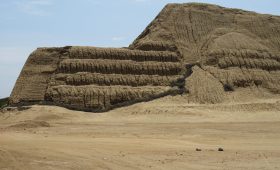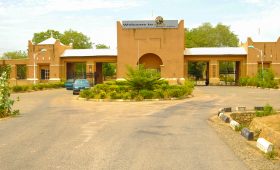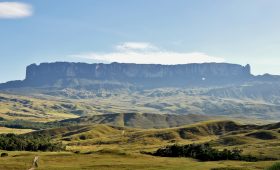Welcome to the Savitsky Museum: A Hidden Gem in Uzbekistan
Are you a passionate traveler who loves exploring unique destinations off the beaten path? If so, then you must add the Savitsky Museum to your bucket list. Located in Uzbekistan, this museum is a hidden gem that offers a one-of-a-kind experience for art enthusiasts and history buffs alike.
Discovering the Savitsky Museum
The Savitsky Museum, officially known as the Karakalpakstan State Museum of Art named after I.V. Savitsky, is situated in the city of Nukus, Uzbekistan. This museum houses an extensive collection of Russian avant-garde art, Central Asian applied arts, and archaeological artifacts.
What sets the Savitsky Museum apart from other art museums is its focus on the forgotten and suppressed art of the Soviet Union. The museum showcases pieces that were considered controversial and were often censored or destroyed during the Soviet era. As a result, it provides visitors with a unique opportunity to explore a lesser-known aspect of Soviet art history.
The Unique Art Collection
The Savitsky Museum boasts an impressive collection of over 90,000 artworks, making it one of the largest museums in Central Asia. The collection includes paintings, sculptures, drawings, ceramics, and textiles, among other forms of art.
One of the highlights of the museum is its collection of Russian avant-garde art. This movement, which emerged in the early 20th century, challenged traditional artistic conventions and embraced innovative styles and techniques. The museum houses works by renowned Russian artists such as Alexander Volkov, Lyubov Popova, and Robert Falk.
In addition to Russian avant-garde art, the museum also features a significant collection of Central Asian applied arts. These include intricate textiles, ceramics, and metalwork that showcase the rich cultural heritage of the region.
Exploring the Museum’s History
The Savitsky Museum has a fascinating history that adds to its allure. It was founded in 1966 by Igor Savitsky, a Russian painter and archaeologist. Savitsky was captivated by the art and culture of Central Asia and dedicated his life to collecting and preserving these treasures.
Despite facing numerous challenges, including government censorship and limited resources, Savitsky managed to amass an impressive collection of artworks. His dedication and passion for preserving Central Asian art eventually led to the establishment of the museum.
Best Time to Visit
The best time to visit the Savitsky Museum is during the spring and autumn seasons when the weather is pleasant. The museum is open year-round, but it’s worth noting that Uzbekistan can experience extreme temperatures during the summer and winter months.
How to Get There
Getting to the Savitsky Museum is relatively straightforward. The closest airport is Nukus International Airport, which is served by domestic flights from major cities in Uzbekistan. From the airport, you can take a taxi or use public transportation to reach the museum.
Local Transportation
Once you arrive in Nukus, there are several transportation options to help you navigate the city and reach the museum. Taxis are readily available and can be hailed on the street or booked through a ride-hailing app. Alternatively, you can use public buses or shared minibusses, known as marshrutkas, to reach the museum.
Summary of Facts
- The Savitsky Museum is located in Nukus, Uzbekistan.
- The museum showcases a collection of Russian avant-garde art, Central Asian applied arts, and archaeological artifacts.
- The museum was founded by Igor Savitsky in 1966.
- The collection includes over 90,000 artworks.
- The museum is open year-round, with the best time to visit being during spring and autumn.
- The closest airport to the museum is Nukus International Airport.
- Taxis, public buses, and marshrutkas are available for local transportation in Nukus.
Visiting the Savitsky Museum is an unforgettable experience that allows you to delve into the hidden world of Soviet art history and explore the rich cultural heritage of Central Asia. Make sure to add this hidden gem to your travel itinerary and embark on a journey of discovery unlike any other.




